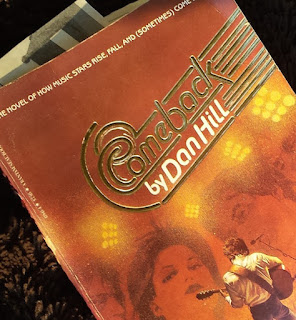Caught in the Snare: The Sequel to Edith Percival
May Agnes Fleming
New York: Street & Smith, [c. 1917]
215 pages
Describing
Caught in the Snare as the sequel to
Edith Percival is like saying that the last twenty chapters of
Two Solitudes is
Two Solitudes Two. Really,
Caught in the Snare is just the second half of
Edith Percival, a novel publisher Street & Smith divided in two because the length didn't fit its New Eagle Series format. It begins where Street & Smith's
Edith Percival (
reviewed here last week) left off, with virtuous Edith the captive of Ralph de Lisle. If all goes according to the villain's devious plan, she will soon be forced to marry him with fellow captive Frederic Stanley, her one true love, as witness. The publisher provides a helpful synopsis for those new to the story:
To be frank, I didn't much care to continue with Edith's story, though I did want to know what mysterious words were whispered by the Hermit of the Cliffs in saving Fred Stanley from execution. I made something of this when I wrote my review, adding that I thought the hermit "the most interesting character in
Edith Percival."
I've changed my mind.
The hermit is hardly seen in the first half of the novel, but is here, there and everywhere in the second, used as a rudder to steer both characters and plot from a premature end. Depicted here in this cover detail from the 1890 Upton edition, he appears at the Percival family home with information as to where the kidnapped Edith is being held. The hermit next appears as Fred again faces execution – this time as our hero is in the process of being burned at the stake by de Lisle and a tribe of "savages." Once again, Fred's life is spared; once again Fred is in awe:
''Your power extends over more than superstitious savages,'' said Fred, "my father, stern
and haughty as he is, quails before you as he
has never done before any other living man.
Would I knew the secret of your mysterious
power!"
A shadow passed over the face of the hermit,
and when he spoke again his voice was unusually
low and solemn:
"Some day, ere long perhaps, you will learn
all. Until that time, rest in peace, and believe
this mystery is all for the best. I go now to
my home on the cliffs, but something tells me we
will soon meet again."
The chance that Fred – and, presumably, the reader – would one day "learn all" didn't provide much incentive, and still I tramped onward.
I'm glad I did, because the second half of
Caught in the Snare is a wild ride, complete with crossdressing, attempted murder, arson, suicide, a trial, a marriage, more crossdressing, and another marriage. As one character remarks, "this sems [sic] so strange – so improbable – so like an Eastern romance." On the final page, the author manages to slide in one final marriage before the concluding paragraph:
And now, reader, farewell We have journeyed together long; but nothing can last forever. All things must have a close, and the characters who have passed before you must disappear from your view at last. I, too, must go from your sight, for the daylight is dying out of the sky, and my task is ended. I trust, however, we may, ere long, meet again.
We will, May Agnes Fleming, we will.
Object: A 218-page book (adverts included) printed on cheap paper and bound in thin glossy wraps. The cover model is not the same as that used on Street & Smith's
Edith Percival. She bears no closer resemblance to the heroine described in the novel. On the other hand, it is possible that the woman on the cover is meant to be Elva Snowe (whom I've not mentioned for fear of spoiling the plot).
I won my copy for one American dollar in an eBay auction last summer. There were no other bidders.
Access: The University of Toronto, the University of Alberta, and the University of Victoria hold copies of
Caught in the Snare, but not one has Street & Smith's
Edith Percival. This leads me to wonder whether those in charge of acquisitions were taken in by the publisher's claim that it is a sequel.
At the time of this writing, one copy of
Caught in the Snare was being offered for sale online. Price: US$25.00. It can be read for free through
this link thanks to the good folks at the Internet Archive.
Related posts:
























